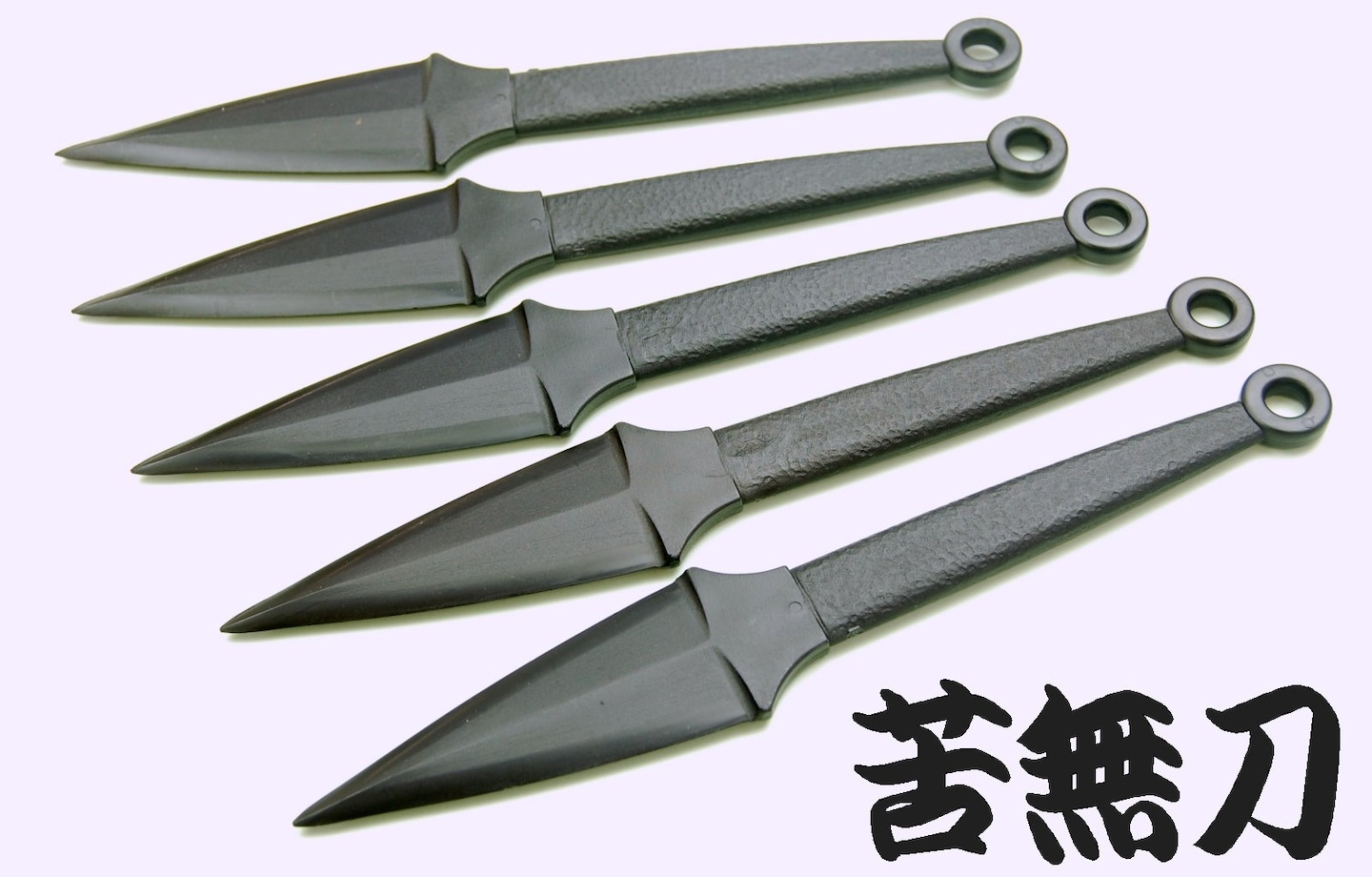4 Essential Pieces of Ninja Gear
In the world of fiction, ninja climb like Spider-man and toss out weapons like they've got bottomless Bat-utility belts. But how much was real, and how much is modern embellishment? Check out the ninja gear below to get some clues and learn a few secrets behind ninja craft!
By Thomas Shiozaki4. Shuriken

https://commons.wikimedia.org/wiki/File:Shurikens.jpg
These are probably the most iconic of ninja weapons. Generally known in English as ninja stars or throwing stars, the name literally means "sword on the back of your hand."
Shuriken consist of a small metal blade that can come in a variety of shapes. While the star shape is best known (technically called a hira shuriken—flat shuriken—or shaken), bo-shuriken consist of a straight iron or steel spike (not to be confused with a kunai), and were historically often made from everyday items like needles and nails. Hira shuriken, on the other hand, might be made out of coins or carpentry tools, and often had a hole in the center so they could be held on a string. Each ninja school typically had a different hira shuriken shape with which it was identified.
Rather than a principal weapon of attack, shuriken were used to distract or to escape from danger, targeting exposed parts of an opponent's body. Hira shuriken might even be embedded in the ground and used like a caltrop (or makibishi), or wrapped in a fuse and lit to cause a fire. They could also be used to graze from a distance and ricochet out of sight, potentially fooling an unsuspecting (and superstitious) sentry into believing he had been cut by an invisible swordsman. They might even be dipped in poison, though this could lead to problems with accidental self-poisoning.
3. Kunai
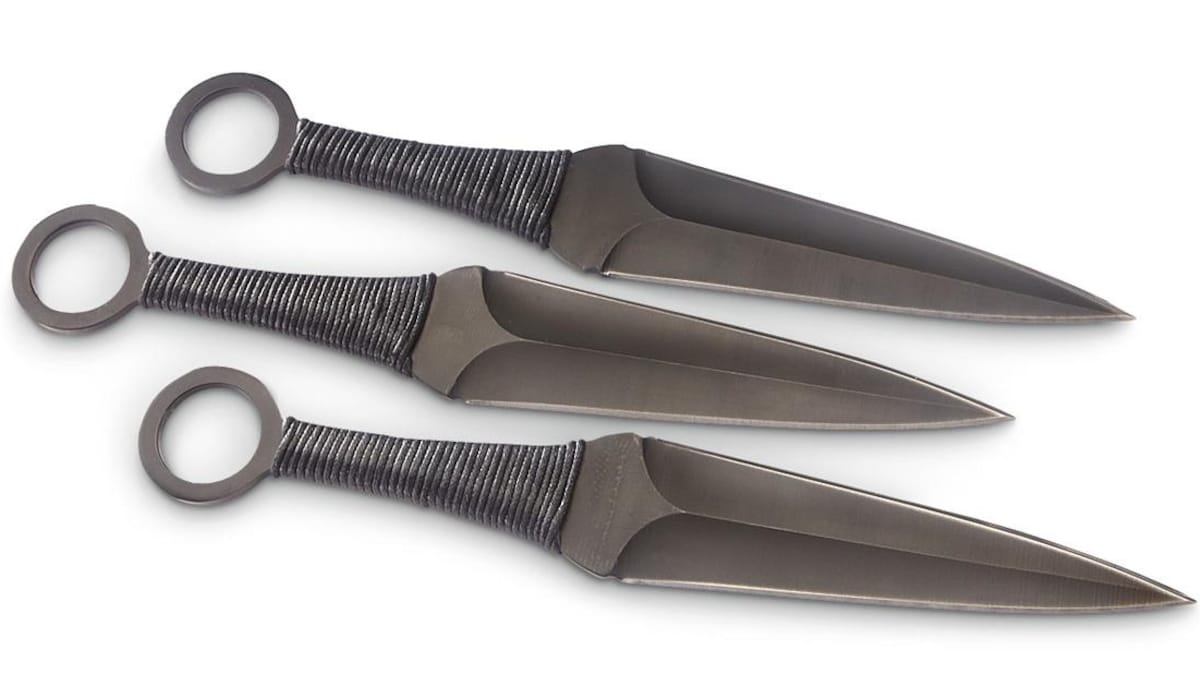
http://www.sportsmansguide.com/product/index/3-pk-of-the-expendables-12-kunai-throwing-knives?a=919095
The kunai is a metal knife, with the large dai-kunai usually reaching about 13 to 15 centimeters in length (5-6 in). Instead of being used as a weapon, ninja typically used a kunai as a utility knife and a tool for climbing. It was especially effective in gouging holes in walls, and also functioned like a crowbar. Easy to carry and hide, kunai were actually fairly common farming tools, making them easy to find and relatively safe to carry without raising suspicion.
Of course, a kunai could also function as a close-quarters weapon, and the ability to attach a rope to the pommel ring made it relatively easy to attach one to a stick to make a spear. While we tend to imagine them as thrown weapons, this was typically reserved for the smaller sho-kunai, which was only about 8 to 10 centimeters long (3-4 in), and even then, throwing was secondary to functional utility.
2. Makibishi
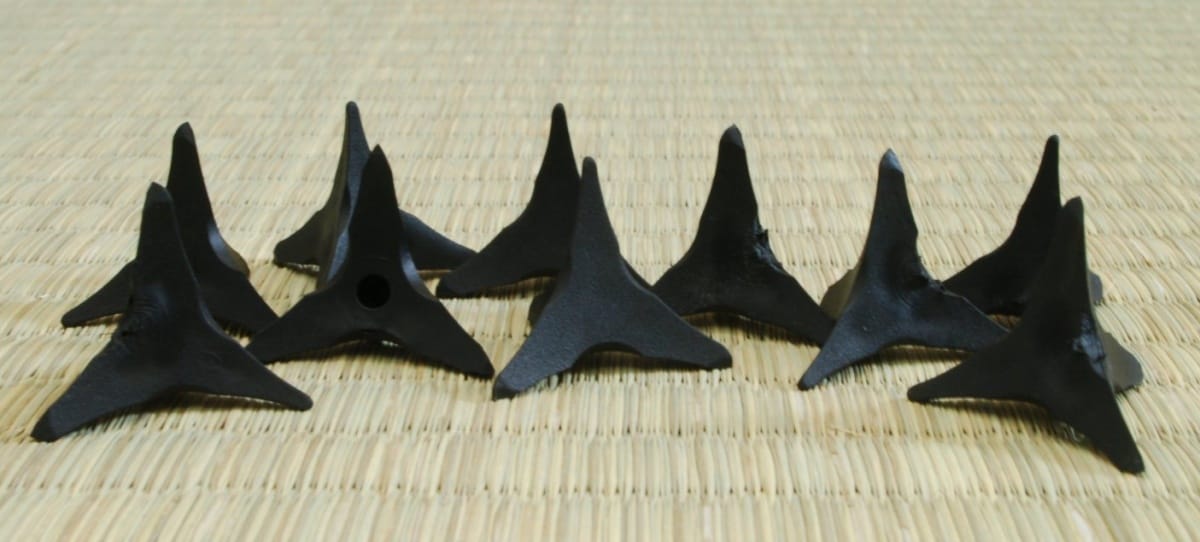
http://www.amazon.de/Ninja-Gummi-Makibishi-Dorn-10-Set/dp/B007FP9C98
These were caltrops used by ninja mostly for slowing down pursuers, though they were also commonly used by samurai to defend fortifications as well. Always landing pointy-side-up, once scattered these spikes could easily penetrate through the straw of waraji sandals commonly worn in feudal Japan. In a pinch, they could also be thrown like shuriken.
Makibishi came in different forms, with ki-bishi made from wood, tetsu-bishi made of iron, and natural tennen-bishi made from the dried seed pod of a water caltrop.
1. Goshiki-mai
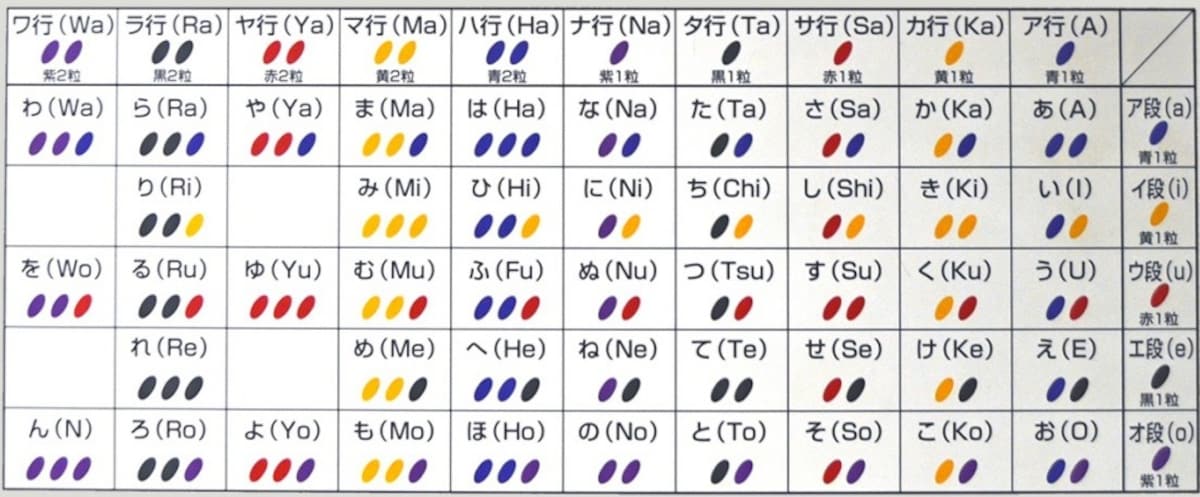
http://www.ninja-museum.com/ninja-database-en/?p=31
As much as we might now think of ninja as lone assassins, communication was also essential to their craft. They would send messages to one another by leaving painted grains of rice in inconspicuous places such as roadsides. The rice was traditionally painted in the five colors of red, yellow, blue, black and purple (goshiki is Japanese for five colors, while mai refers to rice). The paint on the rice also prevented animals from eating it.
Different combinations of colors represented different kana characters, and each ninja school would naturally have its own system of encryption. The one above comes courtesy of the Iga ninja of Mie Prefecture.
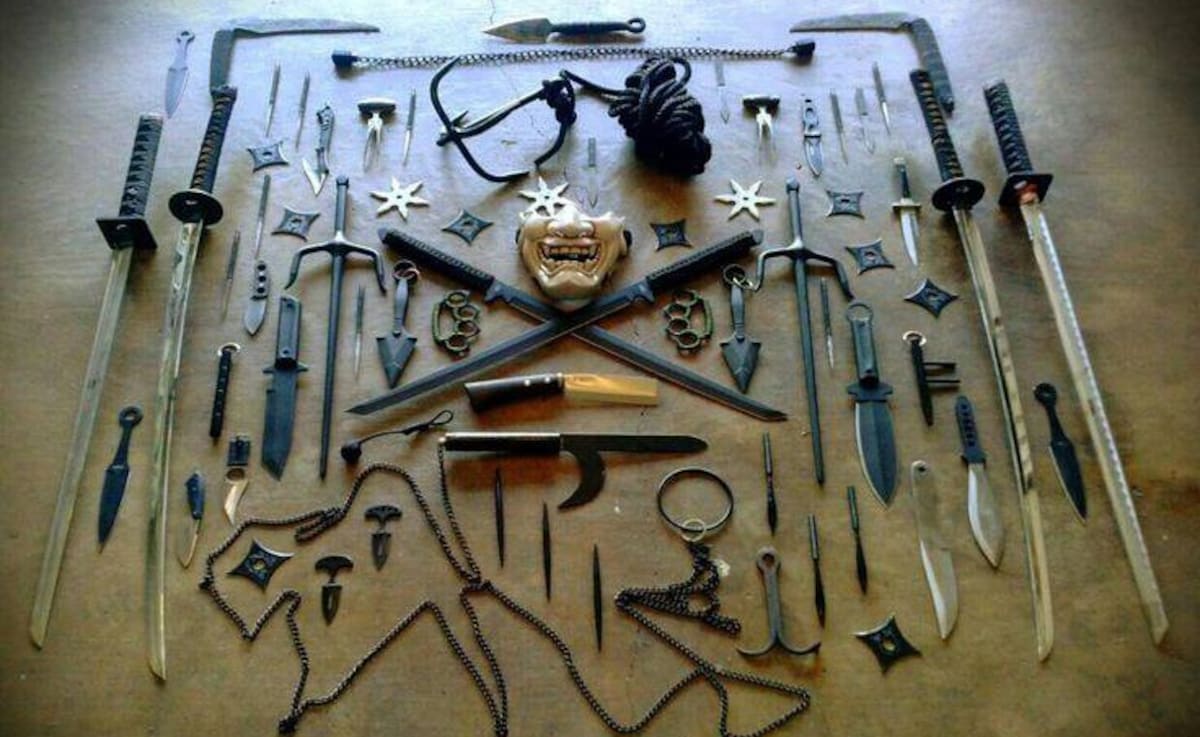
http://entertheninja.com/ninja-fact/ninja-weapons/
While there are of course more advanced and complicated pieces of ninja equipment, the key to many of these fundamental items was that they were commonly available or easy to make—a concession to both the ninja's need to be inconspicuous and their lowly standing in the social order. So when we think of ninja, perhaps we should imagine a little less Bruce Wayne—and a little more MacGyver.


